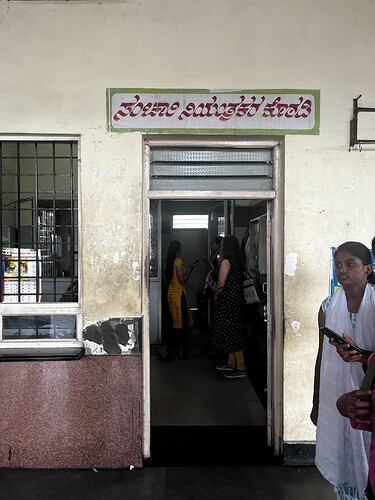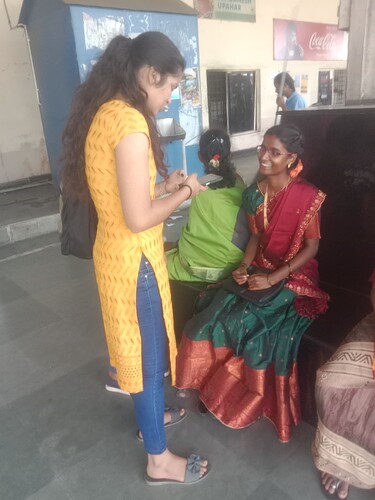What do you do when your daily commute becomes frustrating — with late buses, overcrowding, and unsafe waiting areas?
NavyaShree and her band of friends from K.R. Nagar, Karnataka took matters in their own hands.
The Issue Faced
Most evenings, more than 300 passengers on the Somanahalli–Sangapura route are left waiting — there usually is no KSRTC bus at 6:30 PM. The result? Overcrowded buses, long delays, and a lot of exhausted commuters.
At the same time, the women’s waiting room at the K.R. Nagar bus stand — a space meant for comfort and safety — had turned into a storage room, with poor cleanliness and no place to sit.
These were everyday issues, but they deeply impacted people. Especially women.
The Team Behind the Change
Led by 24-year-old NavyaShree, an X-ray technician, and a problem solver from Guduganahalli village, the initiative brought together 10 passionate solvers — students, professionals, and even a school-going 7th grader. Most of them, or their family members, use the bus regularly. So this wasn’t just a project — it was personal.
What They Did Differently
-
They got inspired by Anusha, another Solve Ninja who had solved a similar problem earlier. Her insights helped shape their plan.
-
They designed and distributed a Google Form to collect commuter opinions.
-
They surveyed over 100 people, gathering data on delays, safety, and the state of the waiting room.
Survey Insights from Commuters in K.R. Nagar
1. Strong Demand for a 6:30 PM Bus
95% of respondents agreed that a bus is urgently needed at 6:30 PM on the Somanahalli–Sangapura route.
Over 300 commuters wait every day, often for more than 2 hours.
The existing bus services are overcrowded, especially during peak hours.
2. Women’s Waiting Room – Poorly Maintained and Misused
Among 84 women who had used the waiting room:
58 used it for peace and quiet.
45 used it just to sit and rest.
20 said they used it to avoid harassment from miscreants.
Among 18 women who had not used it:
60% cited lack of cleanliness.
26 said there was no seating space.
23 mentioned lack of safety.
Offensive graffiti and wall writings were also frequently mentioned.
3. Commonly Reported Issues in the Waiting Room
Out of total responses:
82 people pointed out cleanliness issues.
60 mentioned offensive graffiti.
43 reported lack of seating.
27 mentioned facing issues with miscreants.
27 also said the space was too small or misused.
Community data gathering works — the survey was crucial in making the issue visible to authorities and backing up the group’s demands with real numbers.
-
They compiled everything — including photos and testimonies — into a solid report.
-
Then, they met with the KSRTC Manager and submitted the findings.
Department Reaction
-
The women’s waiting room was cleaned and fixed within 2–3 days after the meeting.
-
The bus schedule change was acknowledged — though the department said it may take time due to bus availability.
-
Interestingly, their request to run an awareness campaign was denied — officials were worried it might go viral on social media!
Want to Do This Too? Here’s a Simple DIY Plan
Step 1: Discover
Notice everyday problems — delays, lack of cleanliness, safety gaps.
Step 2: Investigate
Survey people around you. Use Google Forms or talk directly. Ask questions like:
-
What time do you travel?
-
What issues do you face?
-
Have you used facilities like the waiting room? Why or why not?
Step 3: Solve
Document everything. Take photos. Draft a complaint/report. Seek help from those who’ve solved similar problems.
Step 4: Share
Meet the concerned department. Present your findings. Follow up — once is never enough!
What’s Next?
-
They’re now aiming for a larger survey with 500+ participants
-
Planning to escalate the issue to their MLA, Ravishankar
-
Regular follow-ups with KSRTC to make sure the changes stick
Why This Matters
This effort didn’t come from a formal program. It came from within the community. NavyaShree saw something broken, felt uncomfortable, and chose to act — pulling her peers in with her.
And if she and her team can do this in 10–15 days with just basic tools and a lot of motivation… so can anyone.


